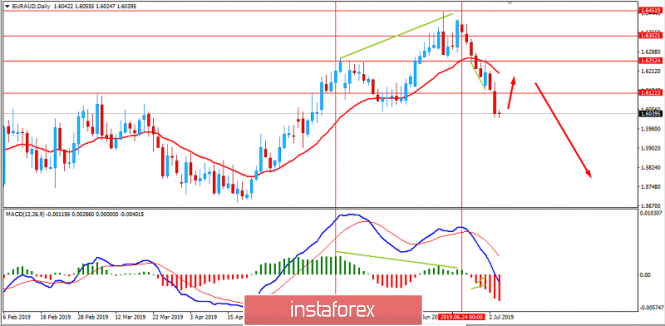The euro declined significantly against the Australian dollar after being the dominant currency the pair since April 2019. The European economy is facing slower economic growth and trade war tensions.
The eurozone is struggling with the mixed economic reports and slowing economic growth which has been the main reason for the euro's recent losses. The ECB is doing its best to improve the inflation situation and boost the economic growth under the conditions of the budget deficit and global trade tensions. According to European financial watchdog, the major EU banks face a collective shortfall of 135 billion euros ($153 billion) to fully comply with global capital requirements by 2027, meaning they need to raise their capital by at least 24.4%. The European Central Bank policymakers aren't yet ready to rush into additional monetary stimulus at this month's meeting, preferring instead to wait for more data on the economy. As per current observations, the ECB may act in July based on the inflation outlook, inflation expectations and downside risks to growth.
Today the retail sales report is going to be published in the eurozone which is expected to increase to 0.4% from the previous value of -0.4%. Ahead of German factory orders and French trade balance reports with mixed expectations, the euro is expected weaken in the coming days.
On the other hand, despite the recent rate cut by the RBA, the Australian dollar managed to sustain the momentum it has gained recently. Australia's conservative government is set to secure the required support on Thursday to pass A$158 billion ($110.47 billion) worth of tax cuts over the next decade. This measure could provide a fillip to the economy that is at risk of stagnation. The tax cuts measure is a relief for Australia's central bank, which has said government action was needed to boost consumer spending in order to revive an economy that is growing at its slowest pace in a decade. Some analysis believe that the Australian economy is still open for reasonable growth, low unemployment and low and stable inflation. As the global risks persist, the RBA is expected to be flexible with the inflation and rate decisions in the coming months.
As of the current scenario, the Australian dollar, having optimistic expectations and a positive hint from the RBA, is expected to extend gains against the euro which is expected to struggle further in the process.
Now let us look at the technical view. The price is currently quite impulsive and non-volatile with the bearish gains. It is expected to pull back towards 1.6150 area before sliding lower with the target towards 1.5700 support area in the coming days. As the price remains below 1.6450 area with a daily close, the probability of certain bearish pressure is expected to be quite high.

